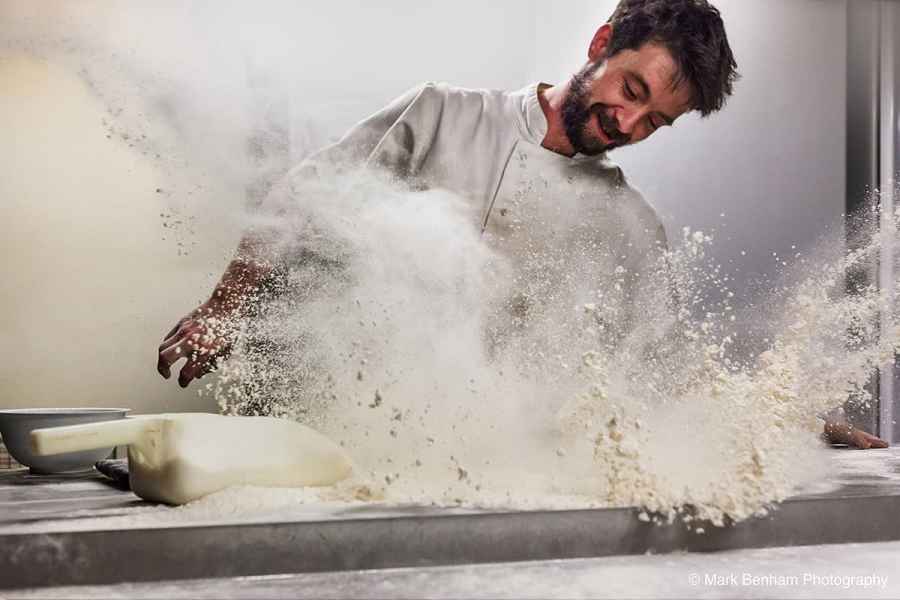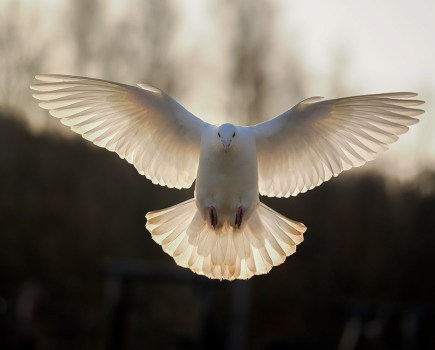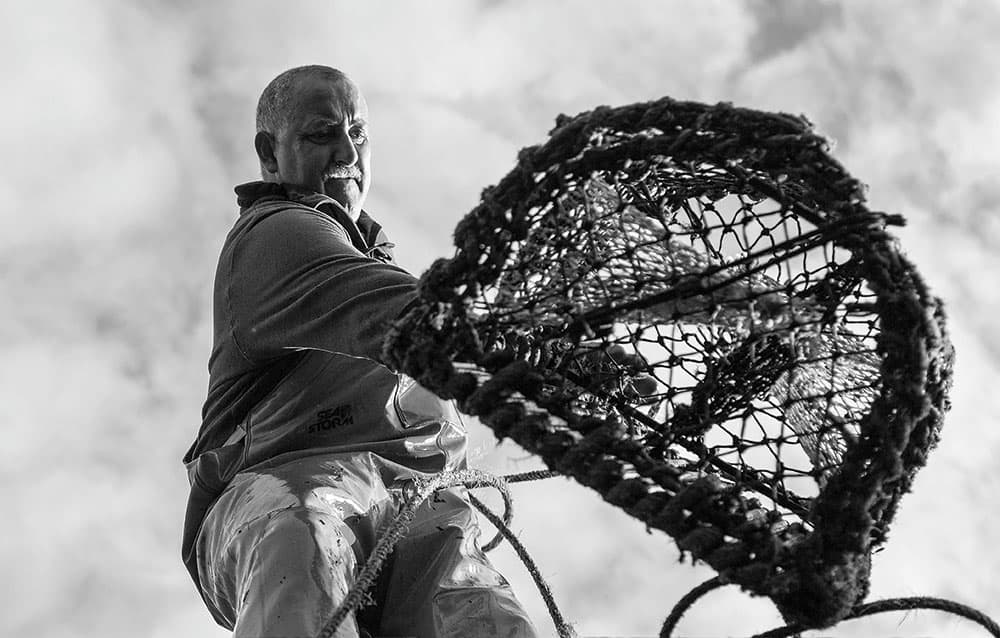
A great example of a dynamic shot of the people who catch or produce food. Canon EOS 5D Mark II, 24-105mm, 1/250sec at f/9, ISO 250. Credit: Mark Benham
These days we’re awash with images of food. They’re everywhere – a mind-boggling array taken by many different specialist photographers, it’s a highly competitive area. Less visible is the photography which focuses on the other side of food: growing, harvesting, selling, distributing, preparing, cooking and eating.
In my former years as a graphic designer and art director, I often worked with a number of excellent food photographers for food service clients. These were long studio shoots, and always in the dark because we used controlled studio lighting and ash. When I moved over to photography, I swore I’d work on location and not in a dark studio, and I’d use natural light as much as possible. I’m so glad I made that decision, as working on location is exciting to me; it provides different challenges and is rarely boring.
Back in 2012/13, when I was moving away from graphics, I spent eight months in Portugal, travelling and taking photos for a book called Two Hundred Days: A Portrait of Portugal. It was this personal project that helped to cement my interest in the lives of ordinary and extraordinary people, including those working with food. It was an important step in establishing my areas of interest and my approach to photography, which I categorise as documentary and storytelling. I’m drawn to those who are passionate about what they do, whether they’re fishermen (I recently photographed sea fishermen on a cold day in the North Atlantic off Iceland) or a market gardener dealing with the unpredictable weather, which can ruin crops.
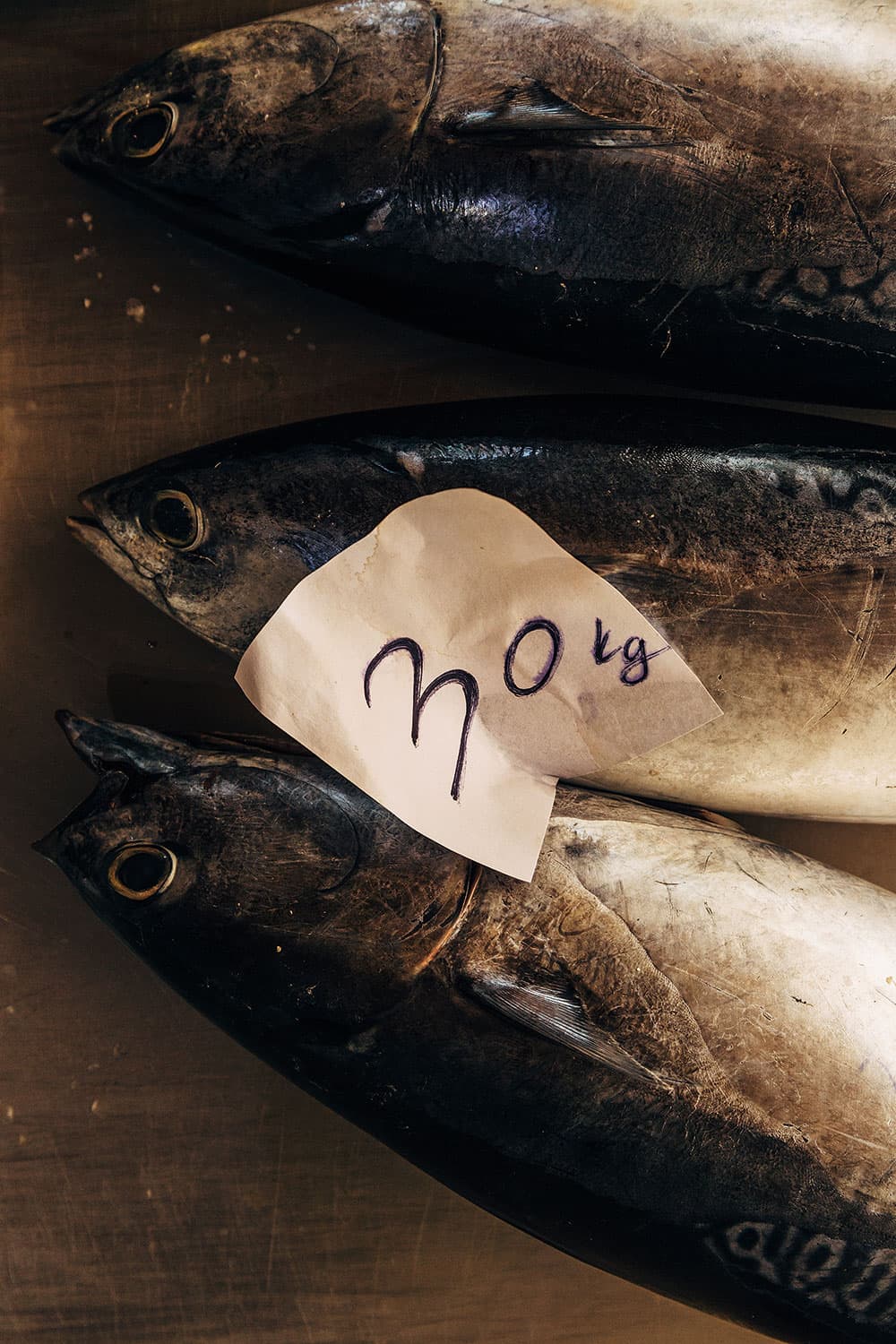
Moodier low-light shots work well, but try and preserve shadow detail. Credit: Mark Benham
More than food on a plate
When it comes to food photography, it doesn’t matter who or what I’m photographing, one key principle remains the same: a willingness to go with the flow. Without this, I wouldn’t have been able to deal with some of the frustrations I have experienced. Whether I’m photographing the gatherers, the cultivators, the sellers or anyone else, I remind myself that this is their livelihood, so I endeavour to work around them, not the other way round. But things change and people don’t always do what you want them to do. Having said that, I’ve been fortunate enough to come across those who have been extremely willing to fit in with my objectives. Gerald, a market gardener who let me follow and photograph him regularly over a period of a year, was very accommodating in allowing me access to his world, which helped capture a more meaningful working-life portrait. I was able to build a close understanding with him over many months, and that investment of time paid dividends. What’s important to my work is to show real people and real life. I’m not a great one for contrived shots, although sometimes they are necessary. Above all, what I love about people and food is the storytelling element, from the expressions on faces that help to reflect what they are doing, to the different personalities that come across in the photographs – no two experiences are ever the same.
While photographing the Icelandic fishermen on a small boat in the middle of the Atlantic, I saw their distinctly different personalities – you don’t experience that when photographing a carrot; a carrot doesn’t have much of a personality, does it? Food markets are always good, known for their vitality and visual interest, and I often find myself heading for one in a town or city when I’m on my travels. You can watch people buying and selling, look for great angles and content, as well as get up close to photograph details. The cherries at a market near Split in Croatia were unbelievably tempting and so appetising! This type of food and life photography means I’m constantly moving, while observing people and their body language, drawn in by enticing colours and shapes to fill the frame. On the other hand, photographing in restaurant kitchens, as I’ve done on numerous occasions, is an entirely different experience, with particular challenges – most notably a lack of space and different types of artificial lighting.
I have found that people and food is, more often than not, a winning combination – it makes for great shots if you’re willing to seek out interesting subjects and not be shy. I like to get close and personal, as it can give my shots that special intimacy. The texture of a cabbage leaf is truly wonderful if you really look, while the cracked hands of someone who has worked on the land all their life tells its own story. One of the things I love to get into my shots, if it’s there, is smoke and steam, especially if there is sunlight to play with, too.
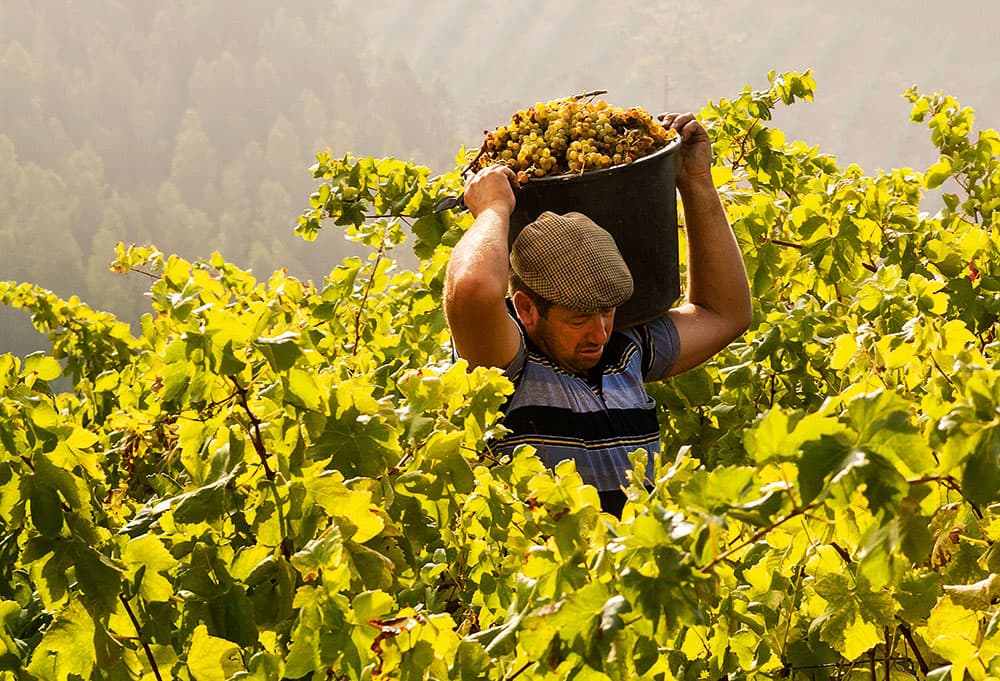
For images of food producers with extra bite, place them within the context of their particular produce. Credit: Mark Benham
Lighting
When it comes to lighting, I usually have to work with what’s available. Unlike a landscape photographer who might choose not to go out because there’s too much low cloud and therefore might decide the shots won’t have the drama they want, I can be more flexible because all light plays its part in telling the real-time story as it unfolds. I can get the drama through the action of people. But, like any photographer, lighting conditions demand that my camera settings are correct, so vigilance is important. I’m constantly keeping an eye on the ISO and shutter speeds, especially when there’s lots of action. Currently, I use a Canon EOS 5D Mark III, which is quite forgiving in low light. I’m a bit of a stickler for high-quality image files, so I prefer not to have too much noise if I can avoid it. This isn’t always possible when photographing a fisherman at 05:45 on a late-September morning. By the way, I dislike flash, so I tend to avoid using it.
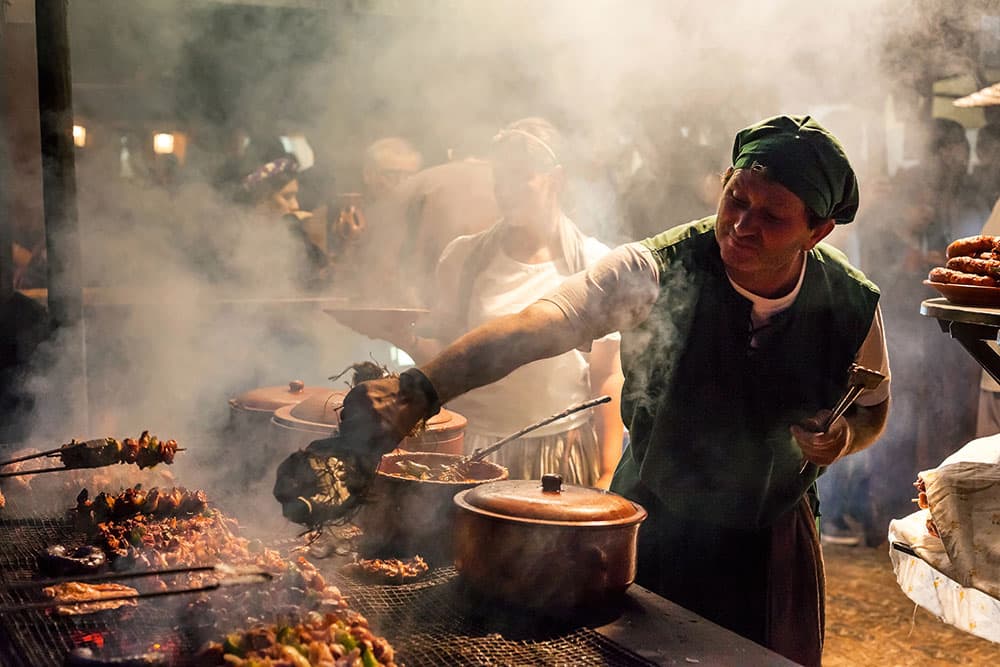
When working inside hot restaurants, be sure to use a fast lens and/or high ISO, and don’t get in the way! Credit: Mark Benham
Lens selection
It goes without saying that your choice of lens is determined by what you’re shooting. Although I have to admit there have been times when I’ve been stuck in a muddy field, with my camera bag in my vehicle, without the ideal lens to hand for an unexpected shot, so I’ve just had to make do. Shooting food in the way I do requires flexibility, I guess, which is why I often pull a zoom with a degree of wideangle out of my bag. The Canon EF 24-105mm f/4 is great, as it gives me that flexibility. Then again, I love working with lightweight primes, such as the Canon 50mm f/1.8 – it’s small and light (plastic) and produces beautifully sharp images. I especially like using this for close-ups or when it helps to have that greater aperture range for low-light conditions.
While there are times when I will use a tripod, most of the time I shoot handheld because of the need to be able to move around freely. In low light, the ISO can often be ratcheted up. I would use a tripod when I’m shooting video or for details and close-ups of food when I want things to be absolutely pin-sharp.
Mark’s top tips for food photography on the move
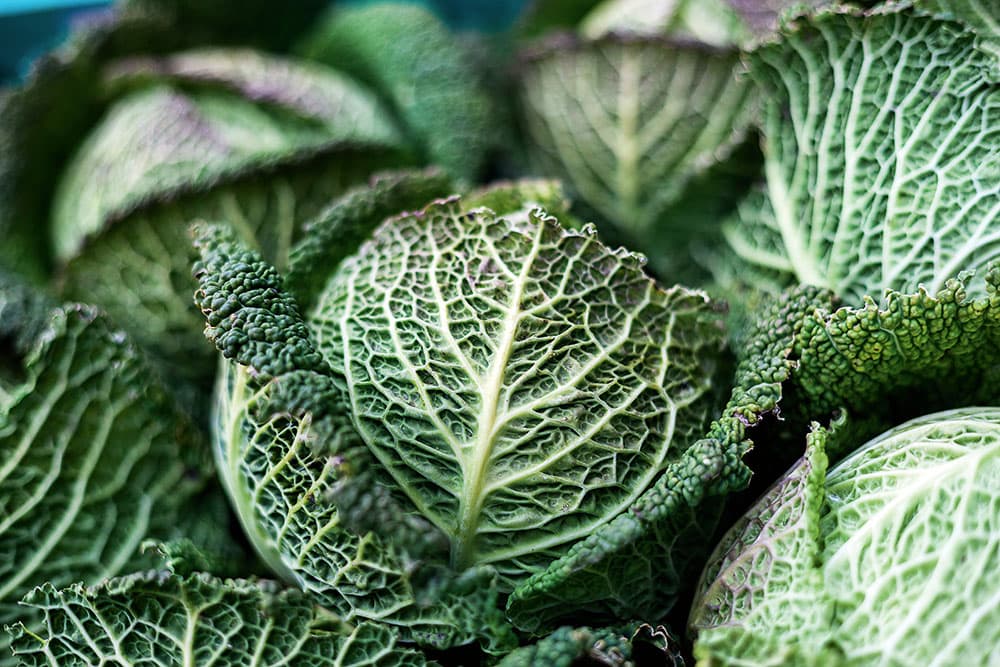
Canon EOS 5D Mark III, 50mm, 1/250sec at f/2.5, ISO 100. Credit: Mark Benham
Details
Take advantage of interesting textures and details, and compose shots in a way that draws in the eye.
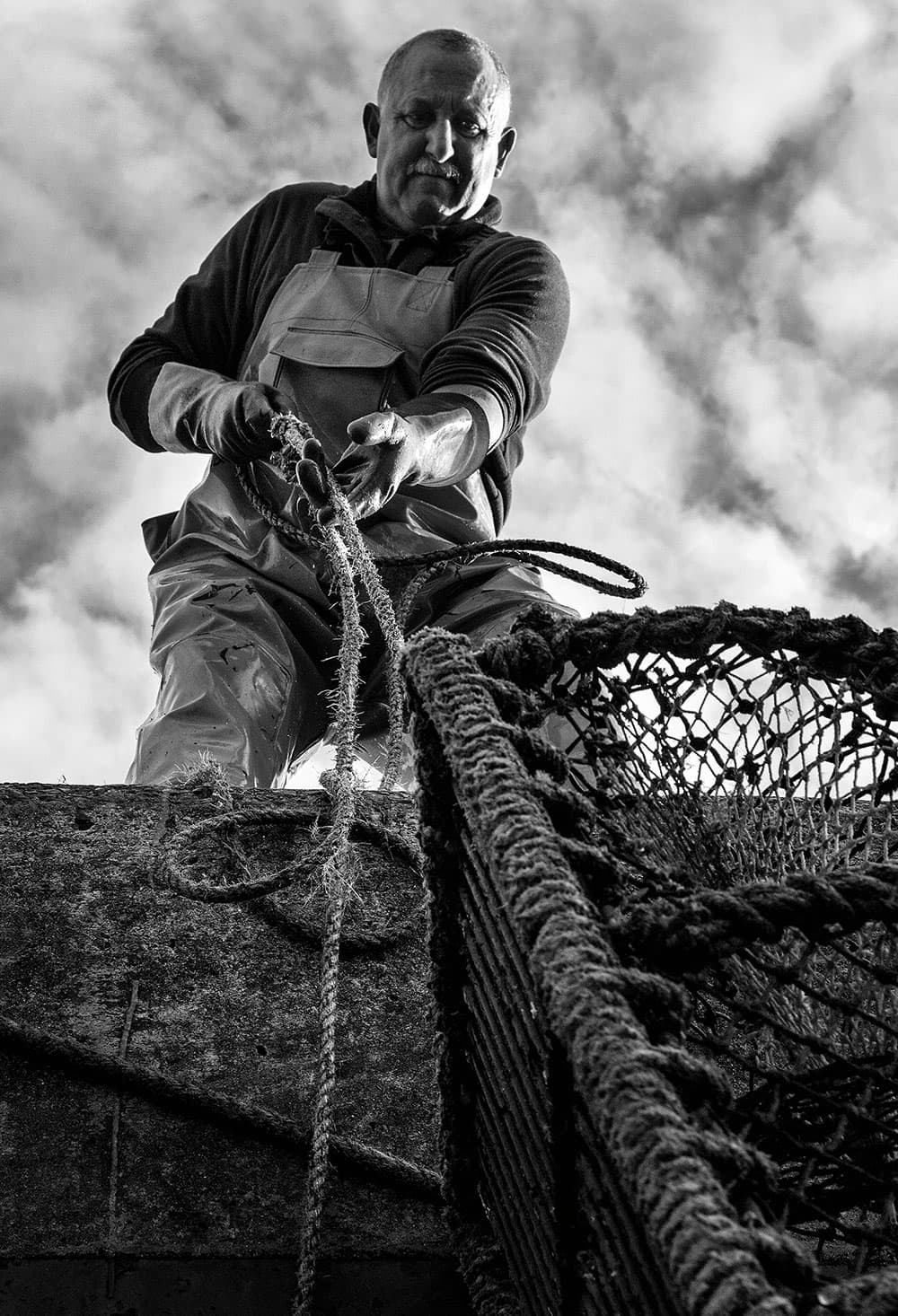
Canon EOS 5D Mark III, 24-105mm, 1/800sec at f/10, ISO 800. Credit: Mark Benham
Angles
Keep a look out for interesting angles, and don’t be afraid to position yourself somewhere for a more dynamic angle in order to add impact.
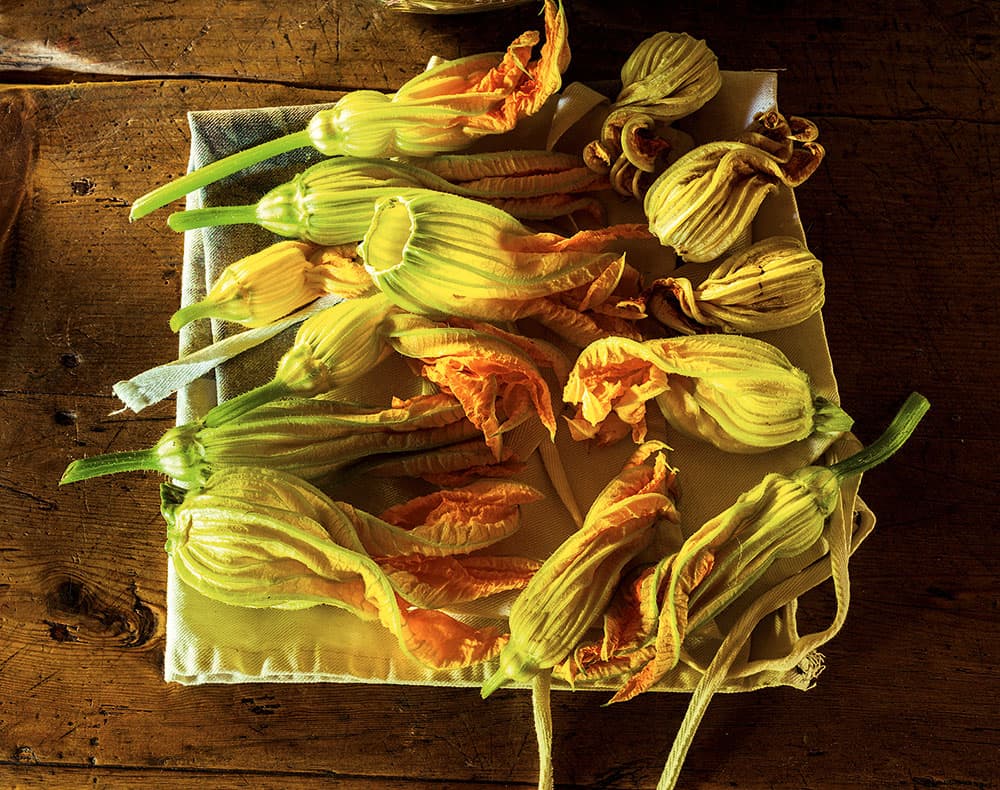
Canon EOS 5D Mark II, 50mm, 30 seconds at f/14, ISO 100. Credit: Mark Benham
Working with lighting
If you’re shooting still life inside use the natural window or doorway light as much as you can, and maybe employ a simple reflector. In low light use a tripod.
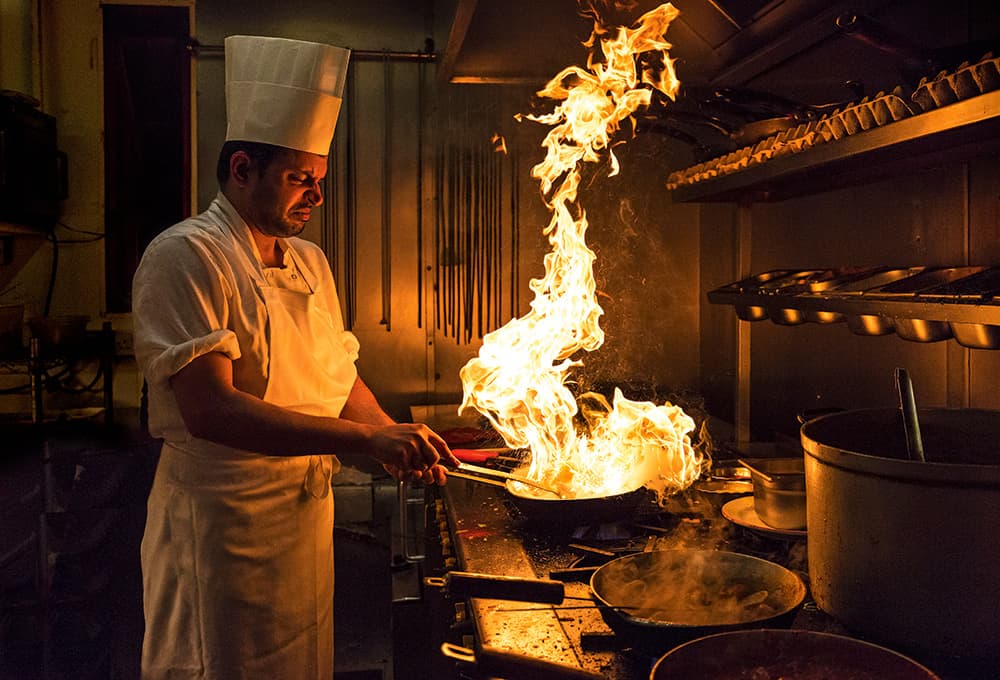
Canon EOS 5D Mark III, 16-35mm, 1/2500sec at f/4.5, ISO 3200. Credit: Mark Benham
Moments of drama
These can happen in an instant, so try to be where the action is. You will probably want a fast shutter speed, so your ISO will be a critical setting, especially if not using flash.
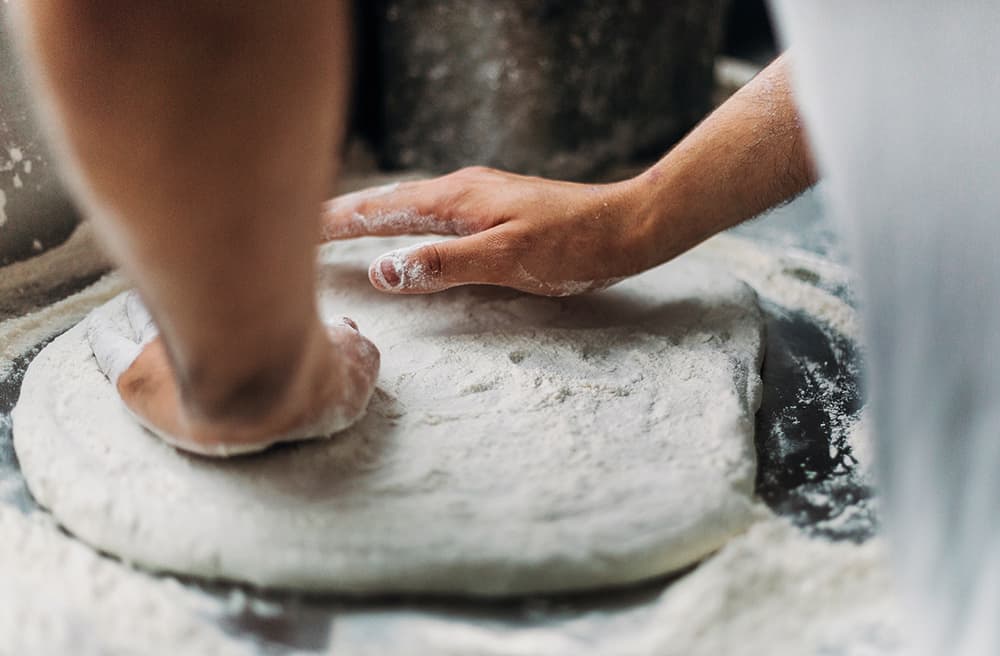
Canon EOS 5D Mark III, 24-105mm, 1/400sec at f/5, ISO 400. Credit: Mark Benham
Tighter framing
Tighter shots vary the visual dynamic on a page, which can enhance your story. Going in close is ideal for bringing attention to hands-on culinary skills.
Kit list
- Spare batteries Carry spares, especially when out shooting for lengthy periods. I find camera brand batteries tend to last longer.
- Shoulder bag Keeping weight to a minimum makes working on the move much easier – a smaller shoulder bag that can carry a couple of lenses is perfect.
- Lenses I currently use a Canon EOS 5D Mark III camera. My preferred lenses are the Canon 24-105mm f/4L and the 50mm f/1.8 prime, which give me all the flexibility I need.
- Lens cloth When working outside in changeable weather it’s essential to keep the outside face of your lens optics clean and dry.
- Tripod Useful for any video work and restaurant interiors, and essential for details in low-light conditions.
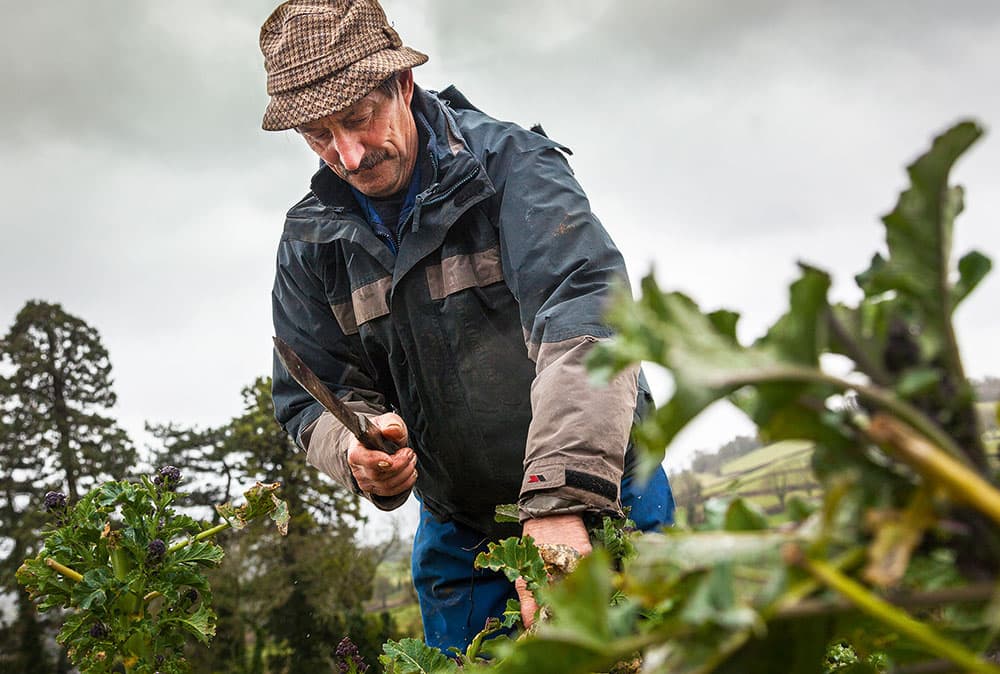
Remember the rules of portraiture will often apply here, so ensure the background is as clutter free as possible. Credit: Mark Benham
A World of food
During the latter part of 2015, I began a personal project called ‘Rich Pickings’ – a year in the life of a market garden, perched on a hillside in a small valley just outside Bath. It provides the local community with fresh organic produce, much of which is sold in the farm shop. It’s a way of life and very much a labour of love, with Gerald Rich at its helm. I made regular visits for a year to document the seasonal changes and the hard work that goes into running this thriving enterprise each and every day of the year. Visit www.markbenham.co.uk/#/rich-pickings.
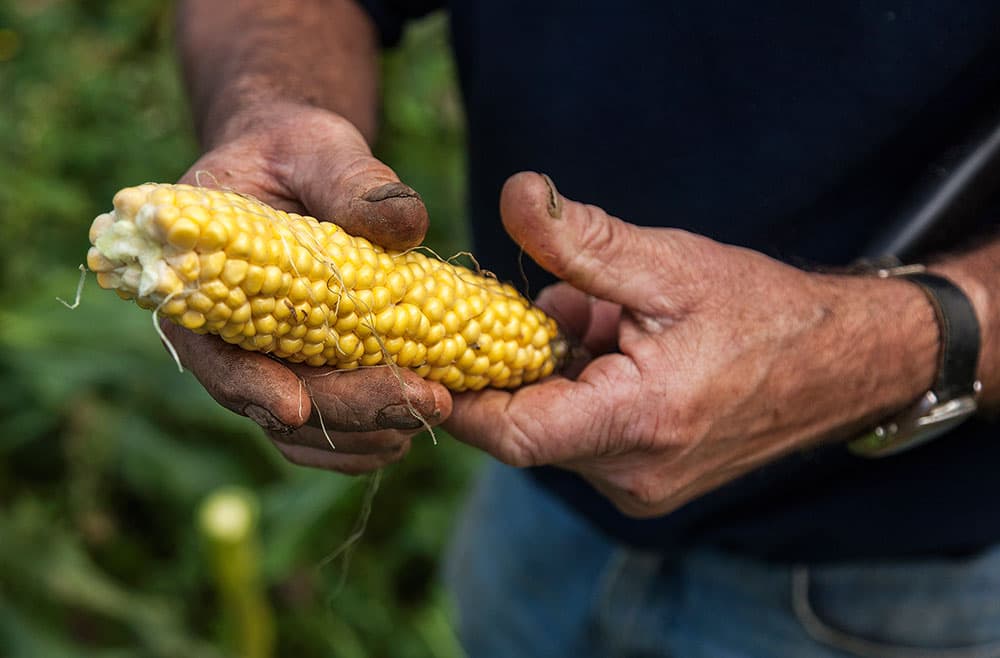
Don’t forget close-up shots and details, too, focusing carefully. Credit: Mark Benham

